If there’s one plant that knows how to steal the show in a garden, it’s the peony. Big, blousy, and bursting with personality, peonies are a classic favorite that never go out of style. If you’ve been toying with the idea of adding them to your cut flower garden, let us give you a gentle nudge with a few irresistible reasons.
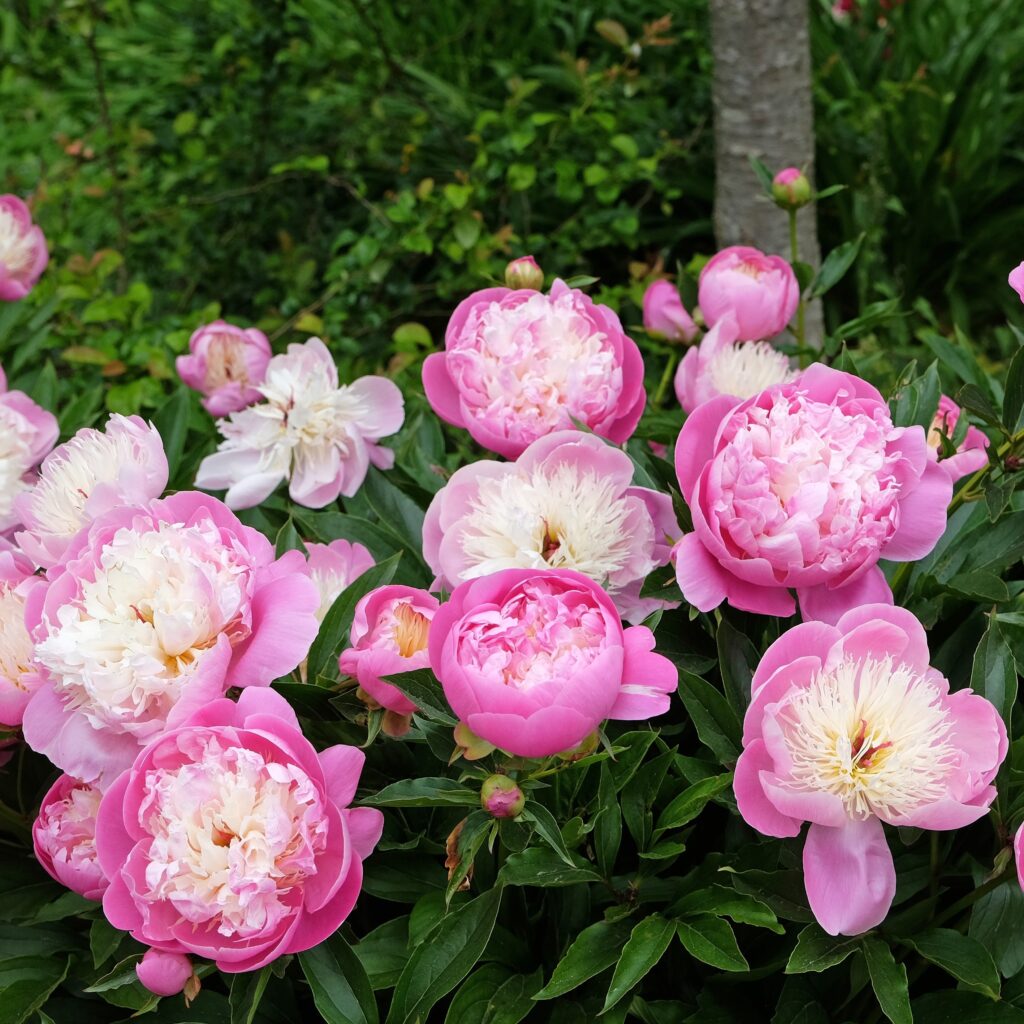
Five Reasons to Grow Peony Roots
- First of all, peonies are exceptionally beautiful. These perennial stunners produce large, luxurious flowers with layer upon layer of silky petals in every shade from sugary pinks and creamy whites to bold reds and even sunshine yellows. When they bloom in late spring or early summer, they create a show-stopping display that can add elegance to both a humble backyard garden or a formal landscape installment.
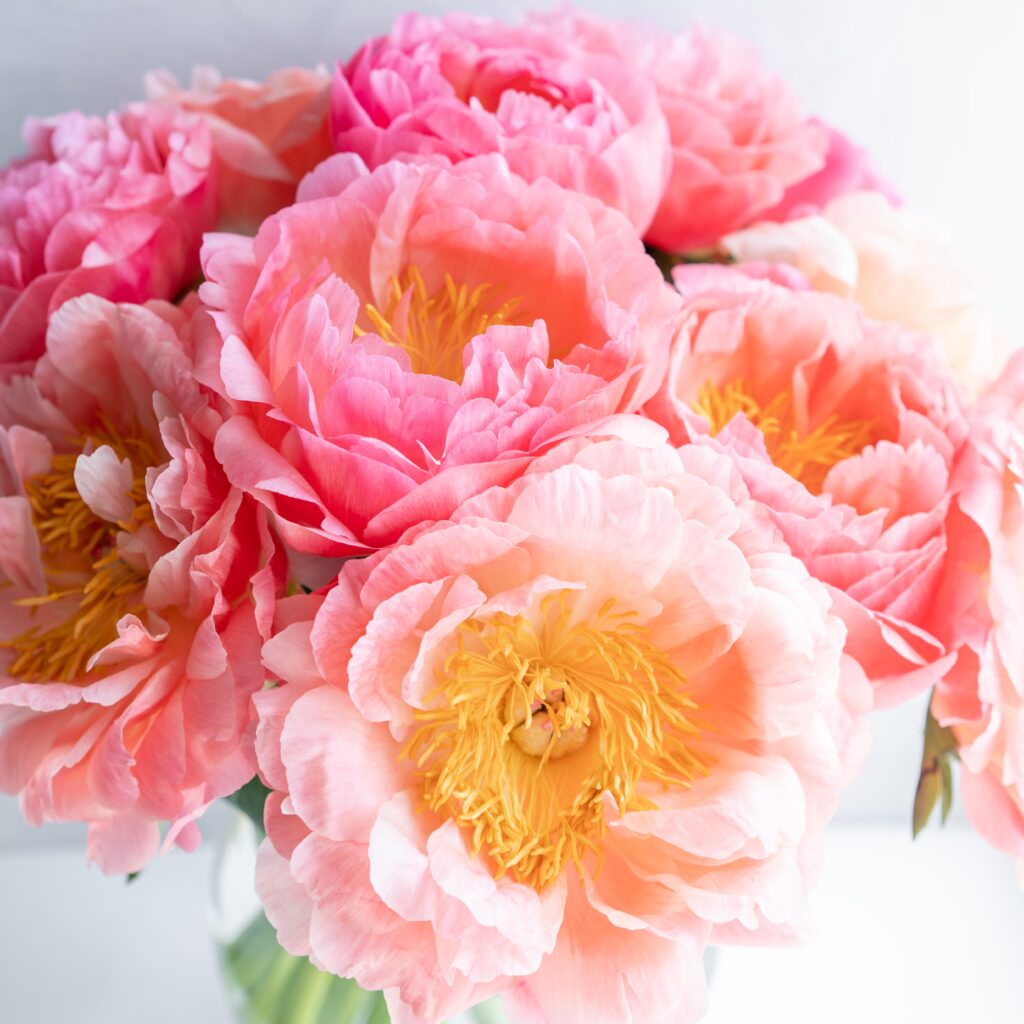
- But here’s the most compelling reason: peonies are incredibly low maintenance. Given their fragile appearance, peonies are surprisingly tough. Once established, they don’t need much fussing over. Plant them in a sunny spot with well-drained soil, and they’ll happily reward you with blooms year after year. Many peony plants have been known to bloom for decades spanning generations with minimal care. This longevity makes them not only a gorgeous choice but also a practical one.
- Then there’s the scent. Oh, the scent! Duchesse de Nemours and Sarah Bernhardt are known for their wonderfully fragrant scent, filling the air with a sweet, fresh perfume that’s downright dreamy. Snip a few stems for the house and bring that lovely perfume indoors, along with a touch of old-fashioned charm.
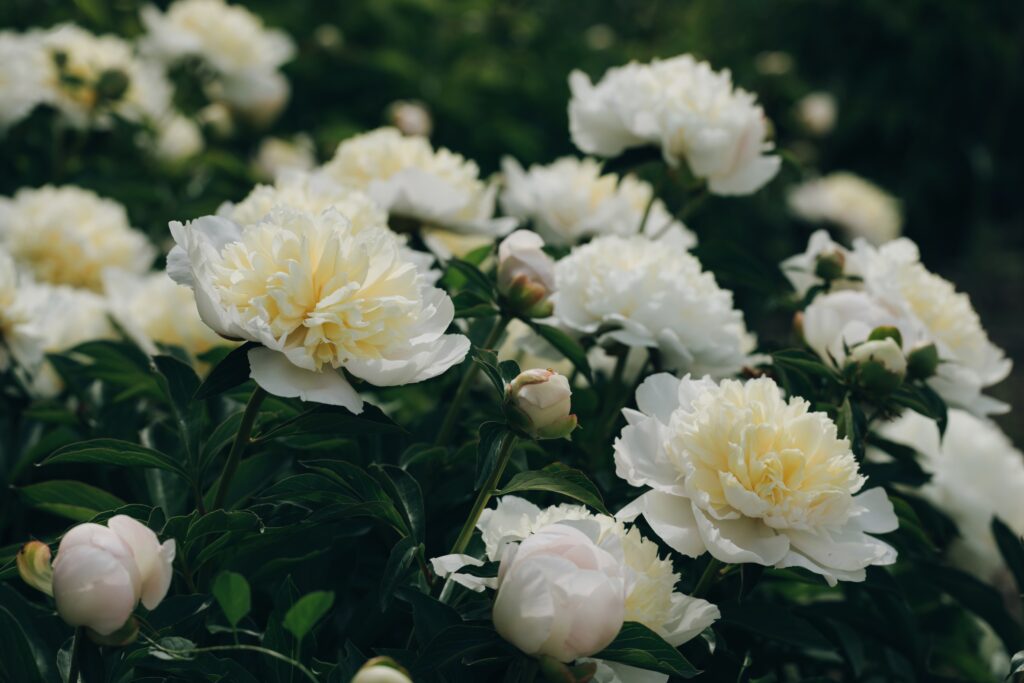
- Peonies are great companion plants that play well with others. Varieties such as Shirley Temple shown here in its jumbo size and Raspberry Charm work beautifully alongside roses, irises, salvia, and catmint, adding both structure and delicacy. Their construction, softened by generous foliage, provides visual interest even after the blooms have faded. Plus, they attract pollinators like bees and butterflies, supporting a healthy and thriving garden ecosystem.
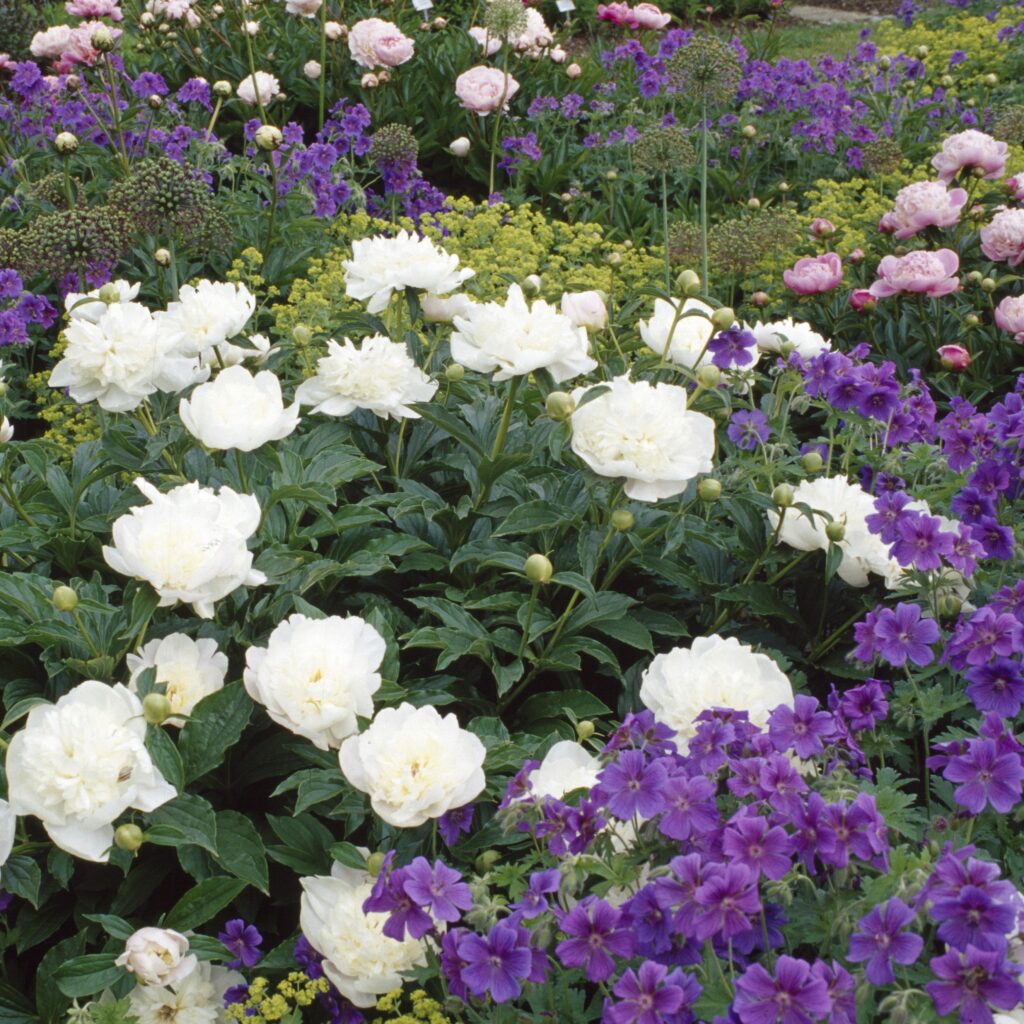
- Perhaps the best reason to grow peonies is for their visual appeal! Peonies offer a touch of sophistication and flair without requiring extensive effort—making them ideal for new and experienced gardeners. Everyone will assume you’ve got some sort of secret green thumb, and who are we to say otherwise? Their luxurious appearance gives the impression of a highly curated garden, even with minimal upkeep.
If you’re considering a new addition to your garden, make room for a peony or two (or five). Peonies are a beautiful, long-lasting, and rewarding choice. Your garden, your neighbors, and honestly your nose will thank you. Let their charm, resilience, and grace delight you for years to come!
Frequently Asked Questions About Peonies
What month is best to plant peonies?
For USDA zones 3 through 8, the ideal time to plant peonies is typically in the fall, specifically between late September and early November. This allows the roots to become established before winter, ensuring a good start for spring growth and blooms. If you plant peonies in the spring, plant them two to three weeks before the last expected spring frost.
How long does it take peonies to grow from bulbs?
Peonies planted from tubers take a few years to reach full maturity and abundant blooms, typically two to five years. While some peonies may produce a few flowers the first year after planting, most will not reach their full bloom potential until they’ve had time to establish a strong root system.
Do peonies prefer sun or shade?
Peonies generally prefer full sun, ideally six to eight hours of sunlight per day. While some varieties, like our Itoh peonies Bartzella, All That Jazz, and Julia Rose can tolerate partial shade, most need a good amount of sunlight to produce abundant blooms.
Do peony bulbs multiply?
No, peony plants don’t technically “multiply” like bulbs that divide naturally. Instead, they multiply through a process called division, where a mature peony plant is carefully dug up, and then divided into sections, each of which contains a crown bud and healthy roots. These divisions can then be replanted to create new individual peony plants.
Why are there so many ants on my peonies?
Peony flowers produce a sweet nectar that ants can’t resist. Their buds secrete a sweet, sugary substance from small glands, which is most intense when the flower is still completely closed or just partially open. Ants feed on the nectar and, in return, help keep other insects away. There’s no need to remove the ants and disrupt this harmonious relationship.
What side of the house do you plant peonies?
Peonies are best planted on the north or east side of your house, and here’s why: The north side receives less direct sunlight, protecting them from the hottest midday sun, while the east side receives morning sun, then afternoon shade, which is also beneficial.
What is the lifespan of a peony?
Long lived and durable, an Itoh peony can easily live as long as 100+ years! The remainder of our selection of herbaceous peonies typically last for 50 years or more. As herbaceous perennials, this group of peonies produces annual stem growth during the spring and summer, then dies to the ground in late fall remaining dormant through the winter season, reemerging green each spring.
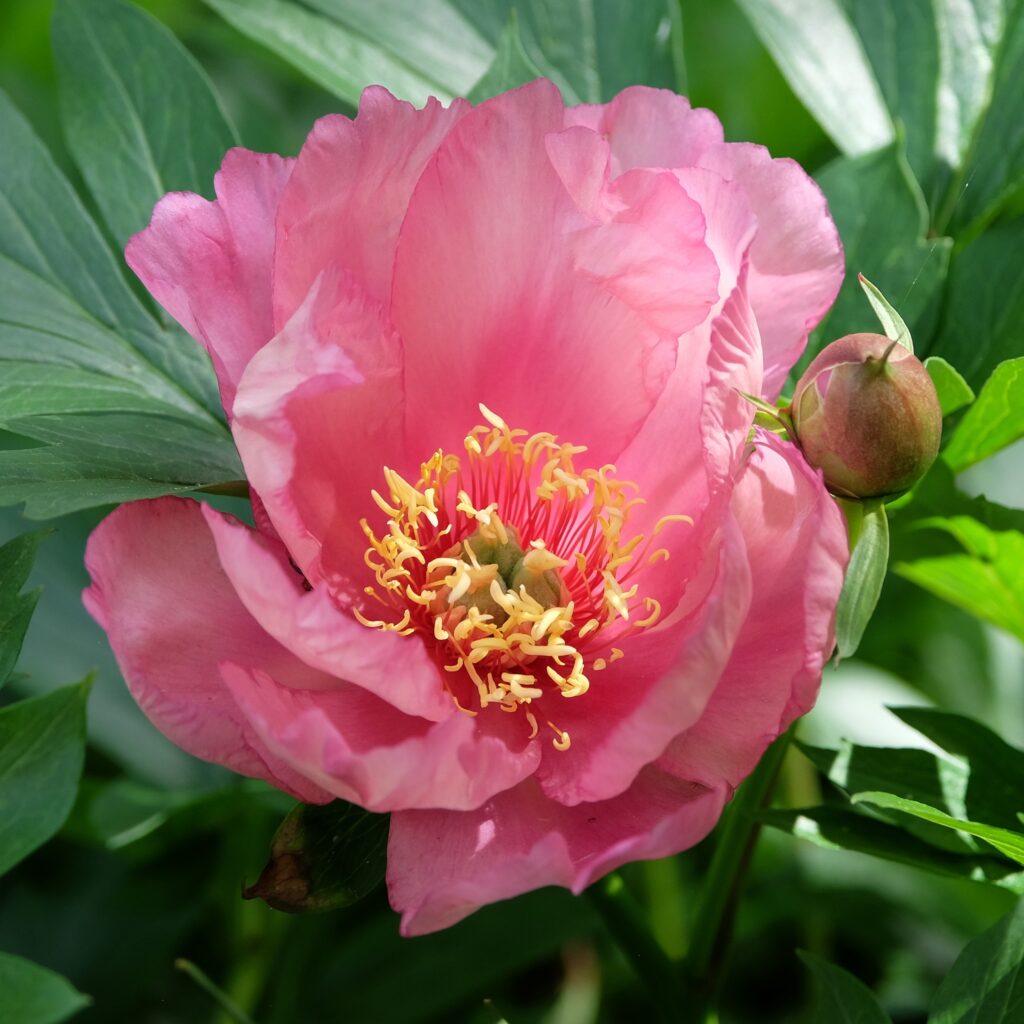
Explore More Garden Inspiration
-

Discover the Magic of our Exclusive Flower Mixes
Discover how each exclusive blend is thoughtfully curated for beauty and purpose.
-

Gardening as Self-Care
Gardening offers a peaceful escape from daily stress, grounding us in the rhythm of nature and providing a sense of accomplishment.
-

The Magic of Saffron Crocus
Harvest your own red gold! Saffron crocus, Crocus sativus, is an autumn-blooming beauty that is not only gorgeous, but it also produces the world’s most luxurious spice.
-

How to Attract Pollinators to Your Garden
Sean and Allison of of the YouTube channel Spoken Garden go over the numerous benefits of attracting birds, bees and butterflies to your home landscape.